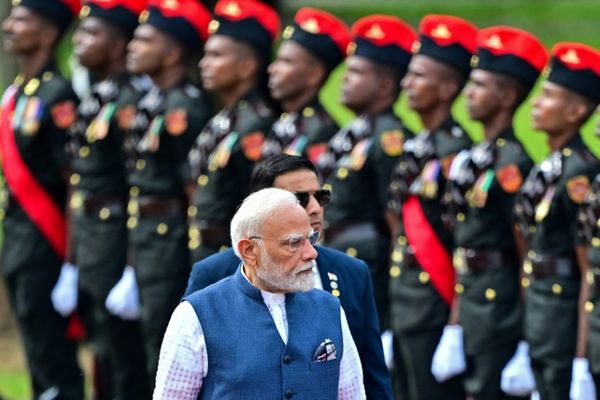
Australia has a golden opportunity to expand its solar energy manufacturing capacity as the industry booms and nations scramble to cut their over-dependence on China, a report by the Australian Australian PV Institute Institute says.
The country is installing 4GW of solar photovoltaic (PV) capacity a year already but meeting just 3% of that from a local supplier, Adelaide’s Tindo Solar. That annual installation tally, though, is predicted to triple by 2050, particularly if Australia becomes a major supplier of hydrogen produced by renewable energy for export.
“We have a pressing need, we have the natural resources and we have a very sizeable market,” the report said. “Unless Australia gains control over the most strategic parts of the PV value chain, the development of any ‘green’ export market will be completely dependent on foreign powers.”
Renate Egan, the APVI secretary and head of the Australian Centre for Advanced Photovoltaics, said China would remain an important supplier of panels to Australia but it was important to diversify supply, including by using local firms.
“You can liken it to Europe’s reliance on gas from Russia,” Egan said, referring to shortages and soaring gas prices after Moscow imposed export curbs in retaliation to sanctions for Russia’s invasion of Ukraine.
“The world is relying increasingly on solar energy generation for the energy transition [from fossil fuels],” she said. “They’re becoming aware of the risks … in that over 90% of the tech comes from China.”
The Covid pandemic helped spur demands for more local manufacturing capability when Australia struggled to secure supplies of vaccines and medical equipment.
Ongoing supply chain disruptions, particularly as China maintains its Covid-zero policies, have given added impetus to calls for more domestic production capability.
Australia and New Zealand buy most of our consumables from overseas, particuarly China. And China is the dominant world supplier for many of our key imports. In the case of computers and phones, China also makes up over 40% of world supply. #ausecon @madelinedunk @DavidPlank12 pic.twitter.com/Jw02qfGh0c
— ANZ_Research (@ANZ_Research) September 21, 2022
A spokesperson for the industry and science minister, Ed Husic, said solar was “clearly going to be a big part of Australia’s renewable energy future”.
“The Albanese government will deliver dedicated support through Powering Australia – a $3bn co-investment stream as part of the National Reconstruction Fund,” he said. “A big part of its focus will be on renewables component manufacturing and low-emissions technologies, including production of batteries and solar panels.
“By 2030, the government aims to have 82% renewables in the national electricity market. To achieve that, we will need to produce much more solar capacity on shore as well as having a diversity in our international supply chains.”
The present trade tensions between Australia and China exacerbated “the potential threat to supply restrictions or sudden price changes”, the APVI paper said.
“Adding to this risk is the growing concern over the possible use of forced labour in parts of China, where much of the silicon, wafers and steel used in PV components are produced,” it said.
Egan said Australian technology was used in 90% of PV panels made today, underscoring the country’s scientific pedigree in the field. The country wouldn’t need to make all of the components in modules but could specialise.
Local firms could make glass, aluminium frames, polymers or the electronics such as inverters, while leaving production of polysilicon – a key raw material – to others.
“I think it’s at the top end of silicon refining and then module assembly,” Egan said. “We need to be making some smart decisions and deploying at scale.”
The paper cited existing suppliers including Selectronic – one of the world’s oldest makers of inverters.
SunDrive is a firm considering commercial-size silicon-based solar cell fabrication in Australia, while 5B is aiming at fast low-cost PV deployment to supply some of the multi-gigawatt-sized solar farms planned for northern Australia.
“To succeed on a global scale, these emerging companies would benefit from market certainty and a coordinated effort to reach scale,” the paper said.
Customers could include Sun Cable, a venture supported by billionaires Mike Cannon-Brookes and Andrew Forrest, that aims to build a 12,000-hectare solar precinct in the Northern Territory with 17-20GW capacity and 36-42GW-hours of energy storage.
Forrest’s Fortescue group said last week it was planning 2-3GW of renewable energy using solar and wind plants between 2024-28. It was also working to identify and resolve bottlenecks in the global supply of decarbonisation technologies and was building the world’s largest electrolyser facility for the production of hydrogen in Gladstone as part of that effort.







